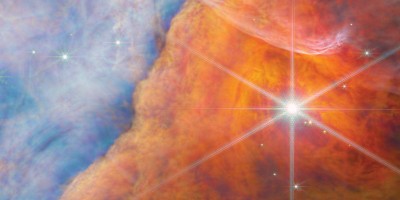

Data availability
MARSIS data are available through the Zenodo research data repository at https://doi.org/10.5281/zenodo.1285179.
References
Lalich, D. E., Hayes, A. G. & Poggiali, V. Explaining bright radar reflections below the south pole of Mars without liquid water. Nat. Astron. https://doi.org/10.1038/s41550-022-01775-z (2022).
Orosei, R. et al. Radar evidence of subglacial liquid water on Mars. Science 361, 490–493 (2018).
Lauro, S. E. et al. Multiple subglacial water bodies below the south pole of Mars unveiled by new MARSIS data. Nat. Astron. 5, 63–70 (2021).
Orosei, R. et al. Numerical simulations of radar echoes rule out basal CO2 ice deposits at Ultimi Scopuli, Mars. Icarus 386, 115163 (2022).
Pettinelli, E. et al. Frequency and time domain permittivity measurements on solid CO2 and solid CO2–soil mixtures as Martian soil simulants. J. Geophys. Res. Planets 108, E4 (2003).
Smith, I. B. et al. A solid interpretation of bright radar reflectors under the Mars south polar ice. Geophys. Res. Lett. 48, e2021GL093618 (2021).
Bierson, C. J., Tulaczyk, S., Courville, S. W. & Putzig, N. E. Strong MARSIS radar reflections from the base of Martian south polar cap may be due to conductive ice or minerals. Geophys. Res. Lett. 48, e2021GL093880 (2021).
Schroeder, D. M. & Steinbrügge, G. Alternatives to liquid water beneath the south polar ice cap of Mars. Geophys. Res. Lett. 48, e2021GL095912 (2021).
Mattei, E. et al. Assessing the role of clay and salts on the origin of MARSIS basal bright reflections. Earth Planet. Sci. Lett. 579, 117370 (2022).
Arnold, N. S. et al. Modeled subglacial water flow routing supports localized intrusive heating as a possible cause of basal melting of Mars’ south polar ice cap. J. Geophys. Res. Planets 124, 2101–2116 (2019).
Kolb, E. J. & Tanaka, K. L. Geologic history of the polar regions of Mars based on Mars global surveyor data. II. Amazonian period. Icarus 154, 22–39 (2001).
Barker, E., Schorn, R., Woszczyk, A., Tull, R. & Little, S. Mars: detection of atmospheric water vapor during the southern hemisphere spring and summer season. Science 170, 1308–1310 (1970).
Kieffer, H. H. Mars south polar spring and summer temperatures: a residual CO2 frost. J. Geophys. Res. 84, 8263–8288 (1979).
Titus, T. N., Kieffer, H. H. & Christensen, P. R. Exposed water ice discovered near the south pole of Mars. Science 299, 1048–1051 (2003).
Bibring, J. P. et al. Perennial water ice identified in the south polar cap of Mars. Nature 428, 627–630 (2004).
Byrne, S. The polar deposits of Mars. Annu. Rev. Earth Planet. Sci. 37, 535–560 (2009).
Byrne, S. & Ingersoll, A. P. Martian climatic events on timescales of centuries: evidence from feature morphology in the residual south polar ice cap. Geophys. Res. Lett. 30, 1696 (2003).
Tokar, R. L. et al. Mars Odissey neutron sensing of the south polar cap. Geophys. Res. Lett. 30, 1677 (2003).
Clifford, S. M. et al. The state and future of Mars polar science and exploration. Icarus 144, 210–242 (2000).
Smith, D. E. et al. Mars Orbiter Laser Altimeter: experiment summary after the first year of global mapping of Mars. J. Geophys. Res. 106, 23689–23722 (2001).
Author information
Authors and Affiliations
Contributions
All authors equally contributed to the discussion and the data analysis; S.E.L., E.P., G.C., E.M., B.C., F.S. and R.O. wrote and revised the manuscript.
Corresponding author
Ethics declarations
Competing interests
The authors declare no competing interests.
Additional information
Publisher’s note Springer Nature remains neutral with regard to jurisdictional claims in published maps and institutional affiliations.
Rights and permissions
About this article
Cite this article
Lauro, S.E., Pettinelli, E., Caprarelli, G. et al. Reply to: Explaining bright radar reflections below the south pole of Mars without liquid water. Nat Astron 7, 259–261 (2023). https://doi.org/10.1038/s41550-022-01871-0
Received:
Accepted:
Published:
Issue Date:
DOI: https://doi.org/10.1038/s41550-022-01871-0
- Springer Nature Limited


